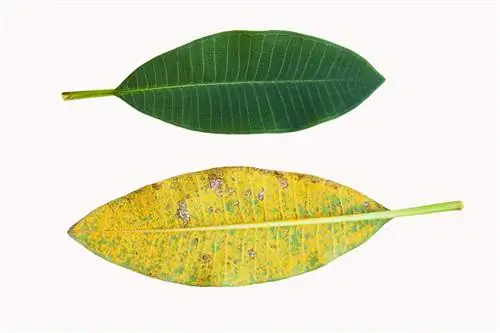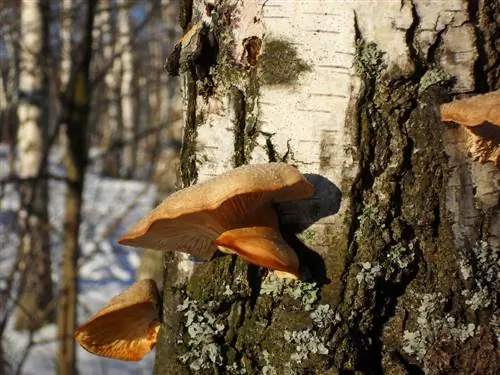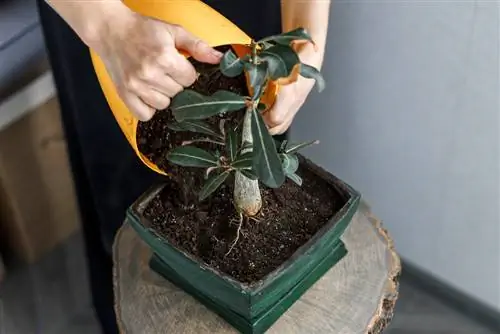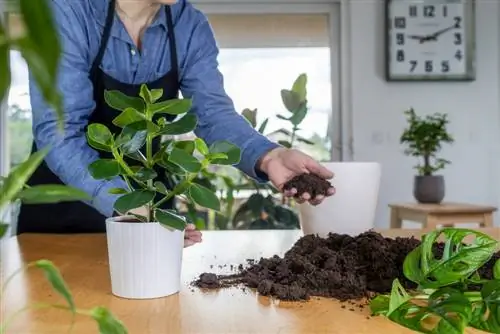- Author admin [email protected].
- Public 2023-12-16 16:46.
- Last modified 2025-01-23 11:20.
He althy magnolias are rarely affected by fungal diseases. Fungi, especially the three mentioned in the text, primarily penetrate trees that are weakened or injured (for example by unclean pruning tools). Always treat fungal diseases as quickly as possible, as the pathogens weaken the magnolia and can even cause it to die.
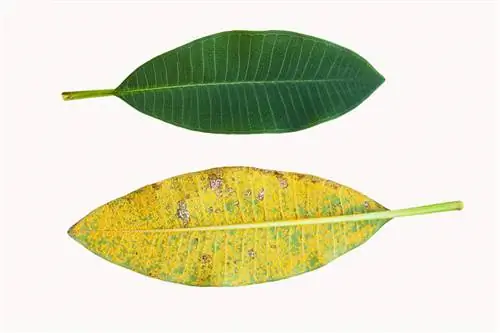
What fungal infestations can affect magnolias?
Magnolias can be affected by powdery mildew, downy mildew, vermilion fungus (Nectria cinnabarina) and gray mold (Botrytis). Treatments include home remedies, copper-containing fungicides, generous pruning of infected areas and sulfur-containing fungicides.
Powdery and downy mildew
If you notice a grayish or white coating on both the top and bottom of the leaf, it is most likely powdery mildew. There are two variants of this. Powdery mildew is also known as the “fair weather fungus” because it primarily appears on warm and dry days. Downy mildew, on the other hand, prefers cooler and wetter weather. Mildew can be treated quite well with home remedies (e.g. garlic or nettle decoction); if the infestation is severe, a fungicide containing copper can help.
Nectria cinnabarina (Vermilion Pustule Mushroom)
This fungal disease affects magnolia branches and twigs and is primarily introduced by unclean pruning tools. You can recognize an infestation by the orange-red or pale red spots on the branches. Nectria cinnabarina is dangerous because the fungus introduces toxins into the plant's metabolism, weakening it and then causing it to die. It mainly occurs when there is a lack of water or strong heat. Cut the affected areas generously back to the he althy wood and dispose of the cuttings immediately - they remain contagious for other plants.
Botrytis (gray mold)
Botrytis, also known as gray rot or gray mold rot, is particularly insidious. It attacks almost all parts of the plant from the roots to the last leaf and even the fruits, feeding not only on living but also on dead material. However, the fungus prefers to attack (if one can speak of a fungus) the bark of young shoots as well as the leaf and flower buds. The tree looks as if it is covered with a gray-white carpet - which it is, because it is a carpet of fungi that spreads very quickly. Remove all affected parts of the plant and store them in a tightly closed plastic bag. Afterwards or if the infestation is too severe, choose a sulfur-containing fungicide (€11.00 on Amazon), for example with the active ingredient fludioxonil.
Tips & Tricks
Since prevention is still better than cure, only cut your magnolia with absolutely clean cutting tools and then seal the wound with tree resin. Additionally, remove dead or diseased plant parts immediately to keep the plant strong.

